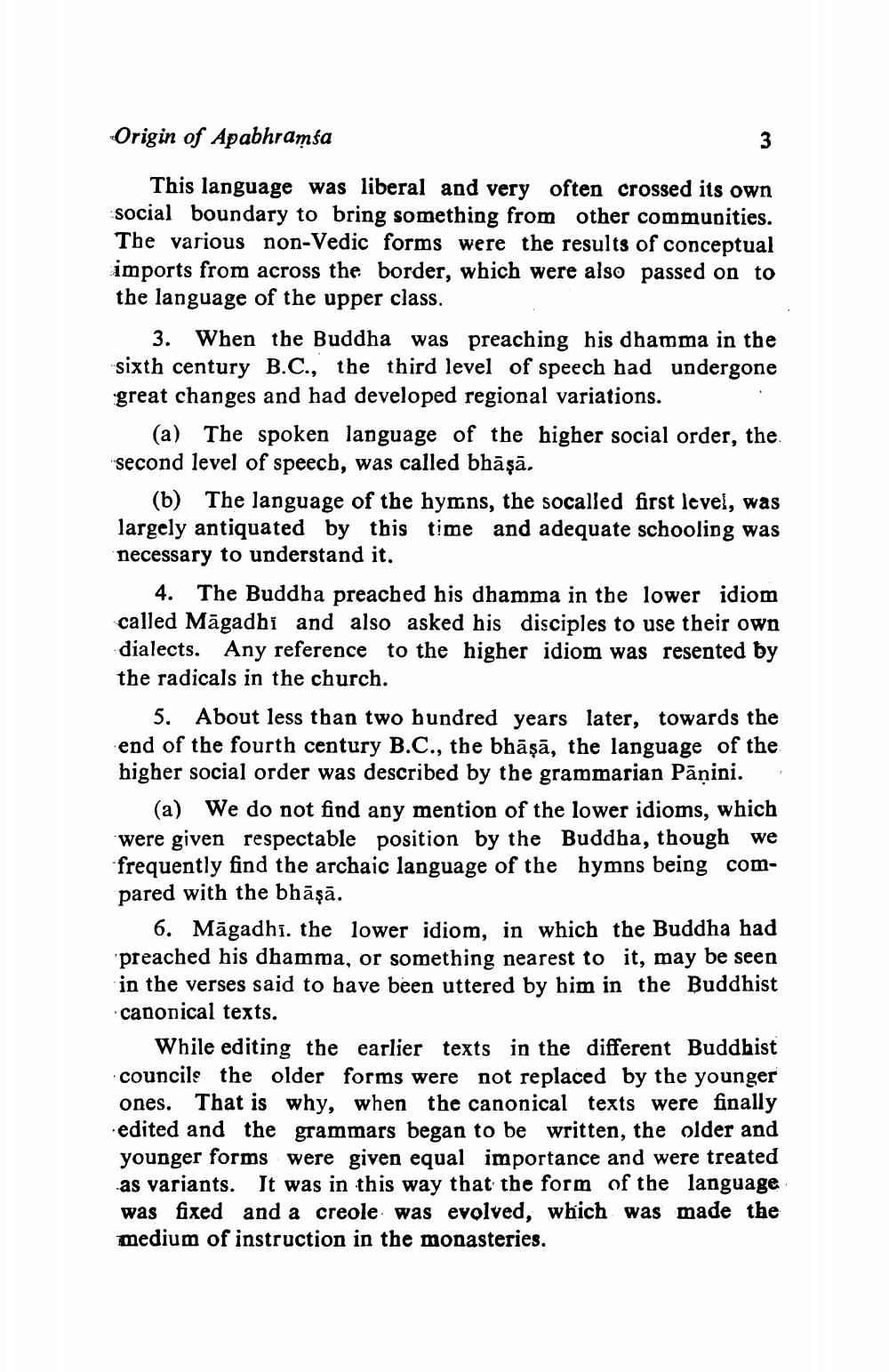________________
Origin of Apabhramsa
This language was liberal and very often crossed its own social boundary to bring something from other communities. The various non-Vedic forms were the results of conceptual imports from across the border, which were also passed on to the language of the upper class.
3. When the Buddha was preaching his dhamma in the sixth century B.C., the third level of speech had undergone great changes and had developed regional variations.
(a) The spoken language of the higher social order, the second level of speecb, was called bhāṣā.
(b) The language of the hymns, the socalled first level, was largely antiquated by this time and adequate schooling was necessary to understand it.
4. The Buddha preached his dhamma in the lower idiom called Māgadhi and also asked his disciples to use their own dialects. Any reference to the higher idiom was resented by the radicals in the church.
5. About less than two hundred years later, towards the end of the fourth century B.C., the bhāṣā, the language of the higher social order was described by the grammarian Pāṇini.
(a) We do not find any mention of the lower idioms, which were given respectable position by the Buddha, though we frequently find the archaic language of the hymns being compared with the bhāṣā.
6. Māgadhi. the lower idiom, in which the Buddha had preached his dhamma, or something nearest to it, may be seen in the verses said to have been uttered by him in the Buddhist canonical texts.
While editing the earlier texts in the different Buddhist councils the older forms were not replaced by the younger ones. That is why, when the canonical texts were finally edited and the grammars began to be written, the older and younger forms were given equal importance and were treated as variants. It was in this way that the form of the language was fixed and a creole was evolved, which was made the medium of instruction in the monasteries.




